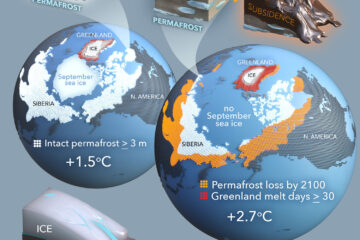Intercomparison of phenological transition dates derived from the PhenoCam Dataset V1.0 and MODIS satellite remote sensing
Phenology is a valuable diagnostic of ecosystem health, and has applications to environmental monitoring and management. Here, we conduct an intercomparison analysis using phenological transition dates derived from near-surface PhenoCam imagery and MODIS satellite remote sensing. We used approximately 600 site-years of data, from 128 camera sites covering a wide range of vegetation types and climate zones. During both “greenness rising” and “greenness falling” transition phases, we found generally good agreement between PhenoCam and MODIS transition dates for agricultural, deciduous forest, and grassland sites, provided that the vegetation in the camera field of view was representative of the broader landscape. The correlation between PhenoCam and MODIS transition dates was poor for evergreen forest sites. We discuss potential reasons (including sub-pixel spatial heterogeneity, flexibility of the transition date extraction method, vegetation index sensitivity in evergreen systems, and PhenoCam geolocation uncertainty) for varying agreement between time series of vegetation indices derived from PhenoCam and MODIS imagery. This analysis increases our confidence in the ability of satellite remote sensing to accurately characterize seasonal dynamics in a range of ecosystems, and provides a basis for interpreting those dynamics in the context of tangible phenological changes occurring on the ground.


